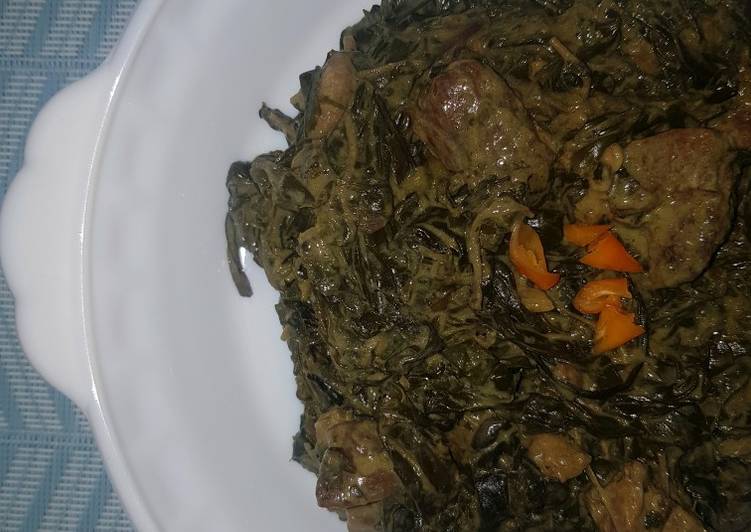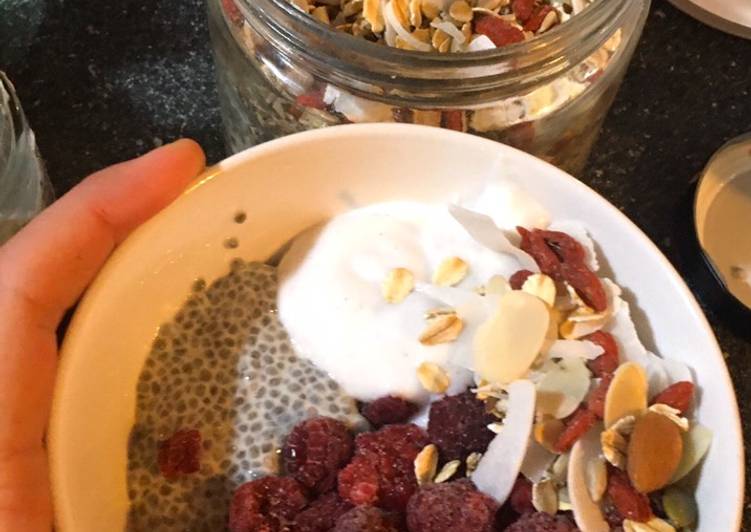
Hello everybody, it’s Drew, welcome to my recipe page. Today, I’m gonna show you how to prepare a distinctive dish, laing (taro leaves in coconut milk). One of my favorites food recipes. For mine, I’m gonna make it a little bit tasty. This is gonna smell and look delicious.
Laing (Taro Leaves in Coconut Milk) is one of the most well liked of recent trending meals in the world. It is easy, it is quick, it tastes yummy. It’s appreciated by millions every day. They are nice and they look fantastic. Laing (Taro Leaves in Coconut Milk) is something which I’ve loved my entire life.
Dried Taro leaves cooked in coconut milk with a lot of chilies! A simple no-fuss recipe that is as authentic as it can get! I wanted to make Laing for Buying the dried Taro leaves was the easiest part as they are available in most big supermarkets.
To begin with this recipe, we must first prepare a few components. You can cook laing (taro leaves in coconut milk) using 12 ingredients and 6 steps. Here is how you can achieve it.
The ingredients needed to make Laing (Taro Leaves in Coconut Milk):
- Get 2 ounces Dried Taro/Gabi Leaves
- Prepare 4 cups coconut milk
- Prepare 1 cup coconut cream
- Prepare 3 cloves garlic minced
- Get 1 onion diced
- Prepare 2 tablespoons bagoong/shrimp paste
- Take 1/2 ke pork cut thinly or cubes
- Get 1/2 cup hibe/dried shrimp
- Prepare 1 thumb-size ginger, peeled and minced
- Get 3 red chilis chopped (add more if you want)
- Prepare to taste Salt and pepper
- Take Cooking oil
Laing is a traditional Filipino delicacy made of shredded or whole taro leaves, coconut milk, meat or seafood, chili peppers, and a variety of Authentic Bicolano laing or commonly known in the region as pinangat na gabi does not use shredded taro leaves but instead, whole leaves are wrapped around. Spicy, leafy, creamy with chunks of pork and the flavor of shrimps hovering in the background, laing is a dish whose origin is attributed to the Bicol region where coconut milk figures I buy the taro leaves in the supermarket where they are sold in pre-weighed bundles and packed on styrofoam trays. The Best Taro Leaves Recipes on Yummly Laing Recipe (taro Leaves With Coconut Milk), Authentic Laing Recipe (taro Leaves In Coconut Milk), Laing With Shrimp. garlic, ginger, shrimps, onion, coconut milk, taro leaves.
Steps to make Laing (Taro Leaves in Coconut Milk):
- Heat pan and add oil. Saute garlic, onions and ginger until garlic is light golden brown and onions are translucent. Set aside.
- Using the same pan, season pork with a little bit of salt and pepper and cook for about 30 minutes or until brown and tender. Note: we will still add bagoong so do not add too much salt. Add back sauted garlic, onions and ginger, chilli, bagoong/shrimp paste and dried shrimp. Cook,for about 2-3 minutes.
- Add coconut milk bring to a boil on medium heat. Make sure to stir frequently to avoid it from burning.
- Add dried taro/gabi leaves and cook for 15-20 minutes without stirring to avoid getting itchy. Push down leaves to absorb coconut milk but do not stir until leaves have softened and turned a darker colour.
- Turn heat to low and cook for another 10-15 minutes, stirring every 5 minutes.
- Add coconut cream and let it simmer for an additional 10 minutes until dish is almost dry and most of the liquid has evaporated and begins to render fat. Add salt and pepper to taste. Remove from heat and serve with a side of steamed rice.
Laing is a Bicolano dish made of tasty gabi (taro) leaves, creamy coconut milk, and spicy chilies. Shrimp and pork add heft to this vegetable recipe. Use this easy-to-follow recipe which uses readily-available ingredients from the grocery and market. Laing is a beloved Filipino dish made of dried taro leaves slowly cooked in coconut milk, aromatics, and spices. Get this authentic Bicolano Laing recipe!
So that’s going to wrap this up with this special food laing (taro leaves in coconut milk) recipe. Thanks so much for your time. I am sure you can make this at home. There’s gonna be interesting food at home recipes coming up. Remember to bookmark this page in your browser, and share it to your loved ones, colleague and friends. Thanks again for reading. Go on get cooking!


